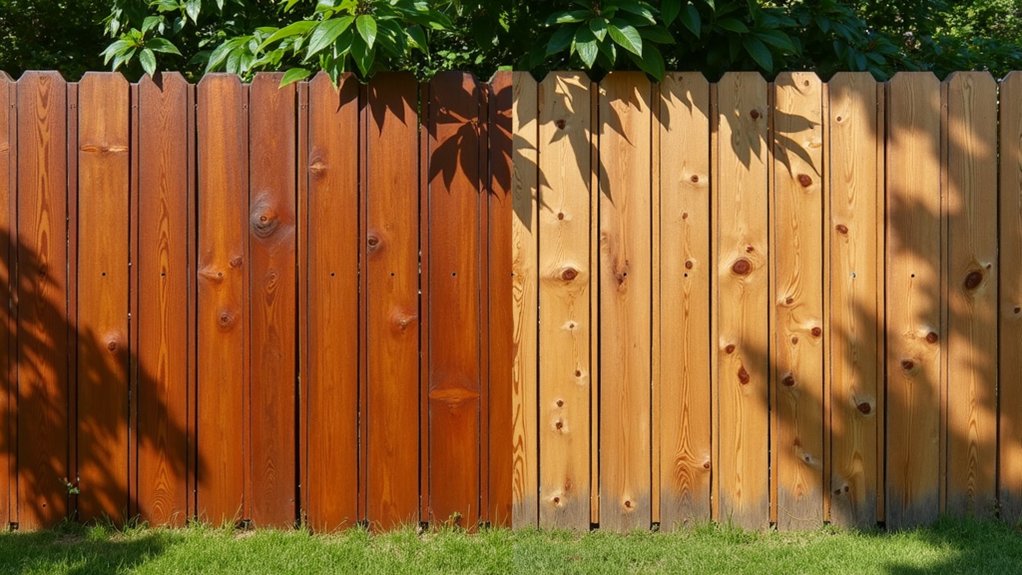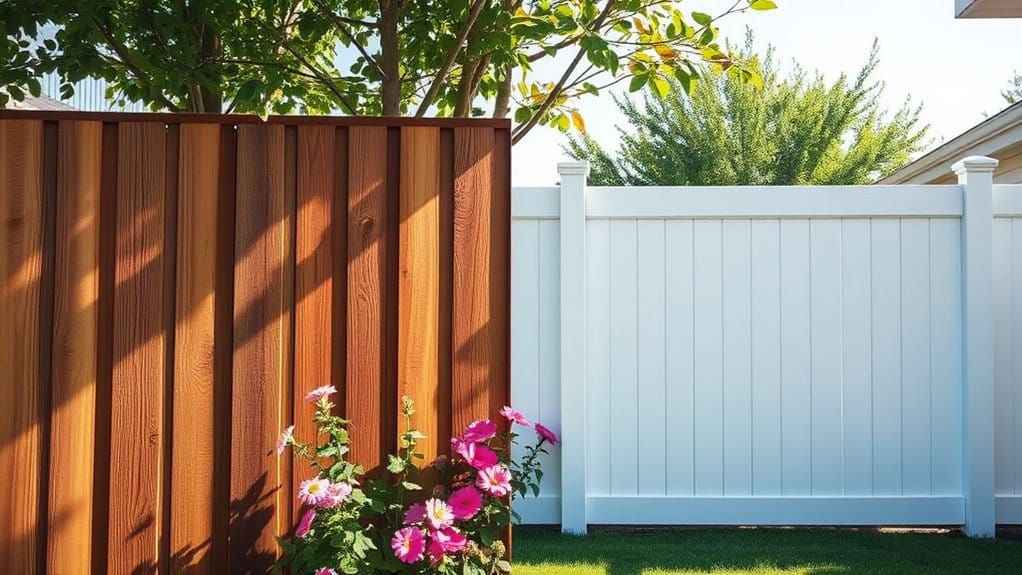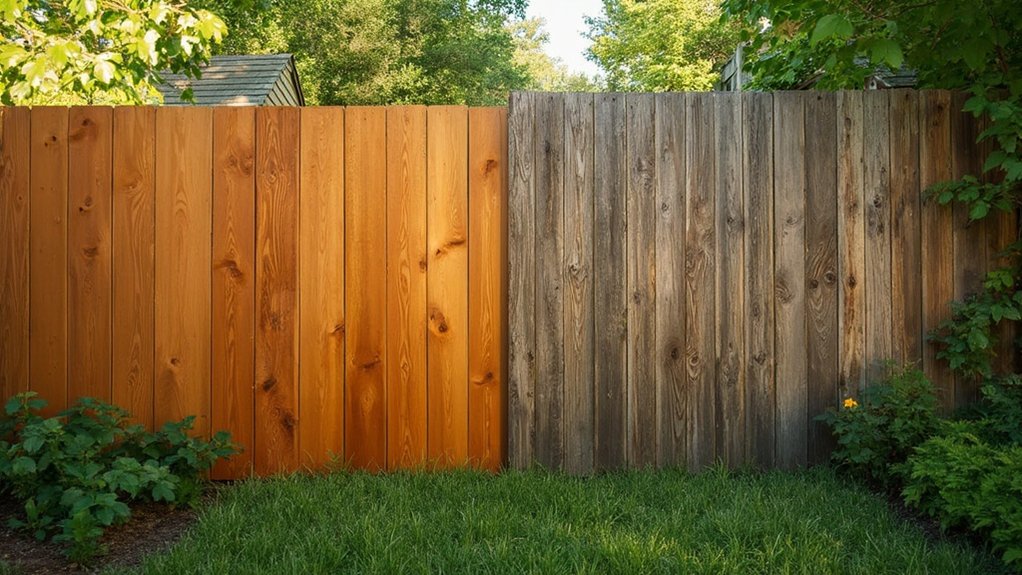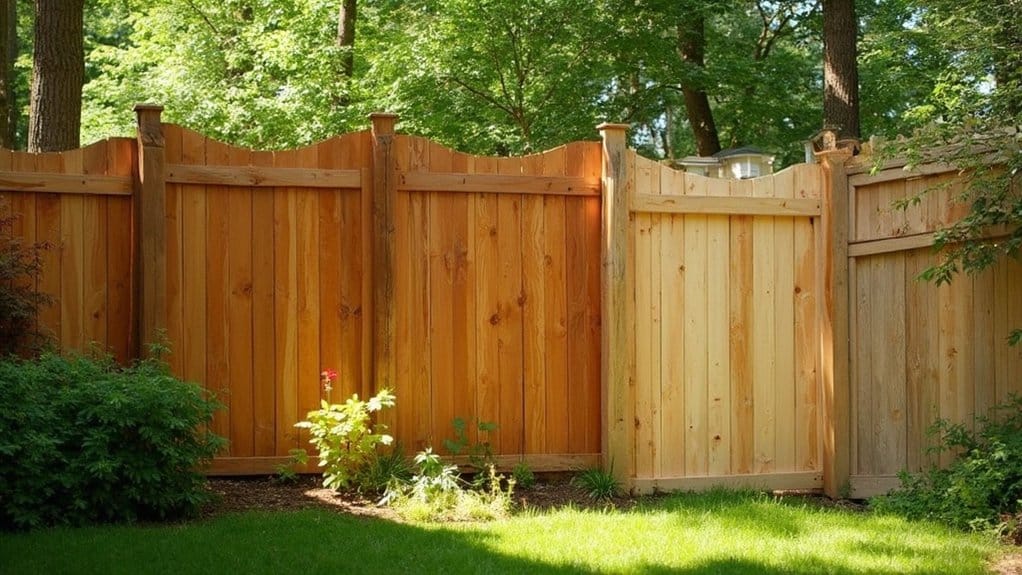When choosing between pre-treated fence materials and on-site treatments, focus on durability, cost, and maintenance. Pre-treated materials are reliable, lasting 15 to 30 years with minimal upkeep, making them a smart choice at $10–$35 per linear foot. On-site treatments offer customization but can lead to unpredictable costs and possible environmental concerns. It’s important to consider that pre-treated wood may contain heavy metals. Weighing these factors will help you decide the best option for your fencing project.
Key Takeaways
- Pre-treated materials ensure quality and durability, lasting 15 to 30 years with less maintenance needed.
- On-site treatments provide customization but often come with higher costs and require ongoing upkeep to remain effective.
- Factory pre-treatment reduces human error and ensures better chemical penetration than on-site options.
- It’s important to assess environmental impacts; pre-treated wood might have harmful substances, while on-site treatments can create localized toxicity.
- Always consult a professional contractor to choose the right materials and meet regulations for your fencing project.
Understanding Pre-Treated Fence Materials

Pre-treated fence materials are a major improvement for outdoor construction, providing greater durability and longer life. These materials go through specific treatments to protect against rot and pests. The type of wood used is crucial, as some species are naturally more resistant to decay. Additionally, it is important to consider size and shape when selecting pre-treated materials for your fencing project, as this can impact the overall effectiveness and appearance of the fence.
Two common treatment methods are the full-cell process, which fills the entire wood structure with preservatives, and the empty-cell process, which mainly treats the cell walls. Proper material choice, such as using pressure treated wood for posts, can significantly enhance the fence’s longevity in various environments. Some treatments also include fire retardants for added safety.
Quality control and third-party inspections ensure these materials meet industry standards, making them a dependable choice for everything from utility poles to residential fences.
Advantages of Pre-Treated Materials
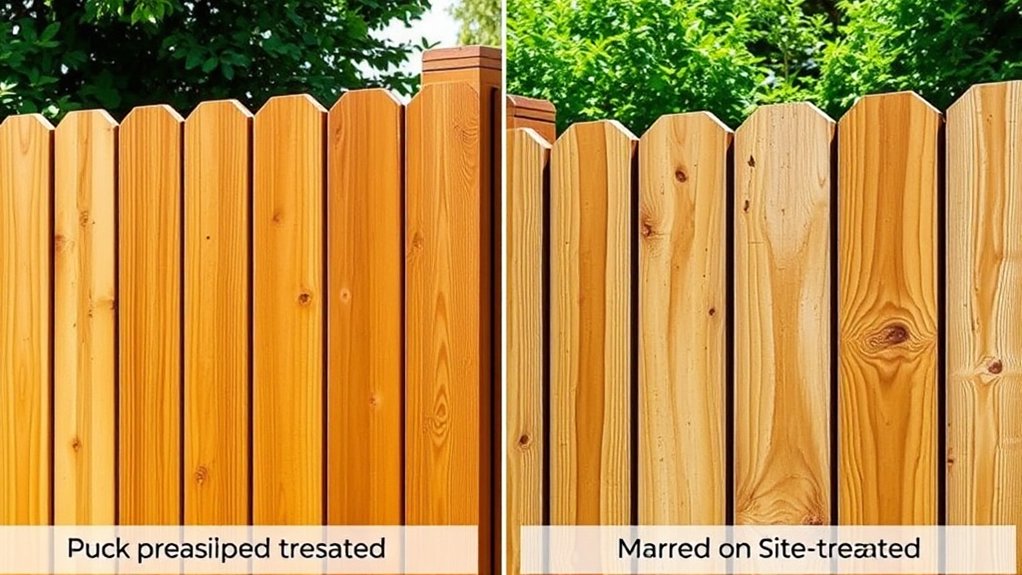
Pre-treated fence materials offer numerous advantages for both homes and businesses.
They’re highly durable, lasting between 15 to 30 years. Thanks to advanced treatments, they resist harsh weather, moisture, and pests, which means fewer repairs and lower maintenance costs. This not only saves you money but also keeps your space looking good. Additionally, when properly maintained, pressure treated wood fences can withstand impacts from jumping dogs and climbing kids without denting. Regular inspections for damage can further enhance the longevity of these materials.
Plus, pre-treated wood comes in various designs, colors, and textures, enhancing your property’s appeal. Ultimately, these materials are a smart long-term investment that helps reduce waste and conserve resources by minimizing the need for replacements.
Exploring On-Site Treatment Options
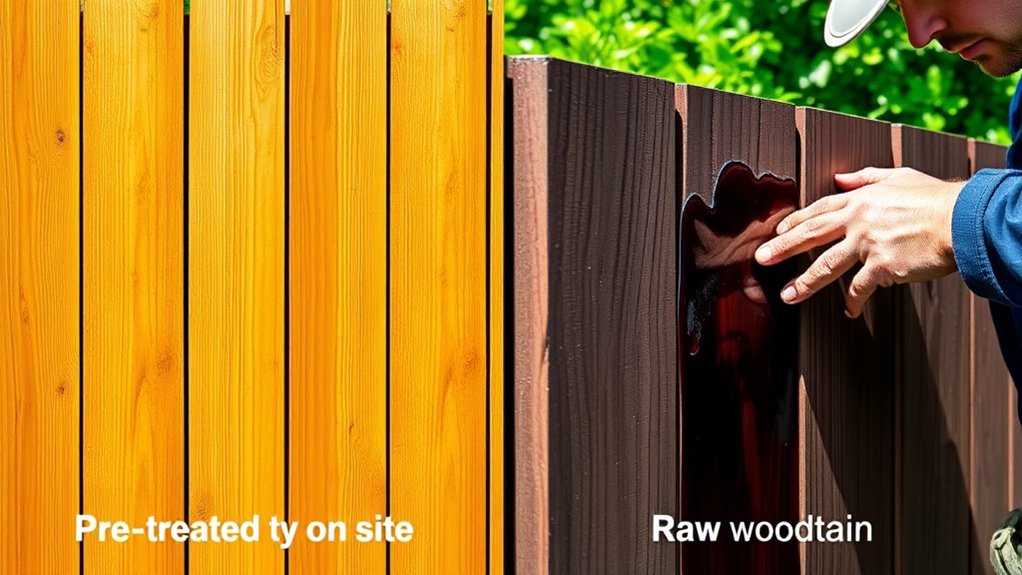
To keep your wood fence durable and protected from the elements, consider on-site chemical treatments like ACQ. These treatments enhance resistance to decay and pests by bonding well with wood fibers, providing better retention than factory options. Additionally, selecting surface treatments like hot-dip galvanizing can offer long-term corrosion protection for metal fences in harsh weather conditions. Regular maintenance, including reapplication every few years, is essential to ensure they remain effective. Remember to reapply them periodically, especially in damp areas, to ensure they remain effective. In addition, using surface coatings such as stains and sealants can help repel water and protect against UV damage, extending your fence’s lifespan. Regular inspections will help you spot wear and make necessary repairs.
Comparing Application Processes

When comparing application processes, factory processing has clear benefits, like uniform treatment and readiness for installation right away.
In contrast, on-site application offers flexibility, letting you adjust to specific site conditions and customize treatments as needed.
Knowing these differences helps you make better choices for your fencing projects.
Factory Processing Advantages
Factory processing is often underestimated, but it offers significant benefits for fence materials.
By using automated machinery in a controlled setting, factory processing ensures consistent treatment that reduces application errors and evenly distributes preservatives. This efficiency not only minimizes human mistakes but also allows for deeper chemical penetration in wood fibers, making them more resistant to rot and insects.
Each panel is treated uniformly, leading to reliable quality and a longer lifespan. As a result, factory-processed fences require less maintenance and fewer repairs, making them a smart choice for both immediate and long-term fencing needs.
On-Site Application Flexibility
Factory-processed fence materials provide a strong base, but applying them on-site has distinct benefits. You can use different methods like brushes, rollers, or sprayers to get the finish you want.
There are various options, including wood sealants, stains, and paints, each offering different levels of protection and looks. Proper surface prep—like power washing and using fungicides—is key for durability.
You can also adjust your application based on weather conditions to ensure the best results. Plus, you can personalize your fence with color, finish, and protective features to meet your specific needs for both style and longevity.
Cost Analysis: Pre-Treated vs. On-Site Treatments

When deciding between pre-treated fence materials and on-site treatments, it’s important to look at the costs involved. Here’s a simple price comparison to help you make your choice:
| Cost Factors | Pre-Treated Materials | On-Site Treatments |
|---|---|---|
| Upfront Material Costs | $10–$35 per linear foot | Similar, plus extra steps |
| Labor and Installation Costs | Lower due to ease of use | Higher due to application time |
| Long-term Maintenance Costs | Less frequent maintenance | More frequent sealing needed |
In general, pre-treated materials can save you money overall, thanks to lower labor and maintenance expenses. On-site treatments might end up costing more in the long run due to their unpredictability. So, if you’re looking for a cost-effective fencing solution, pre-treated options are often the smarter choice.
Durability and Longevity Comparison
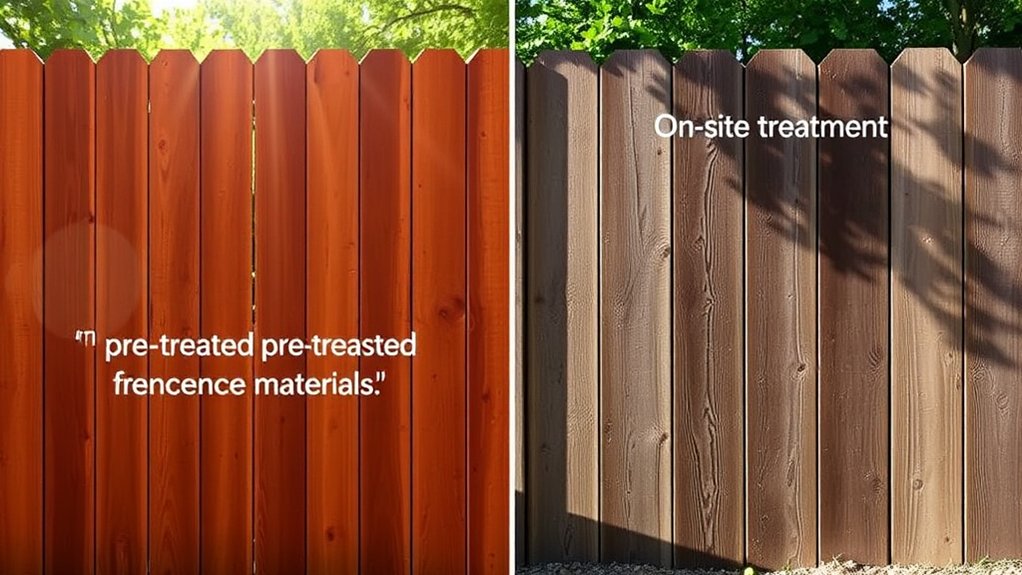
When it comes to durability and longevity, pre-treated fence materials have clear advantages over those treated on-site.
Pressure-treated wood is resistant to decay and insect damage, which helps it last longer. It also resists moisture, reducing the chance of rot and structural problems. Plus, it can handle harsh weather better than untreated wood.
Typically, pressure-treated pine fences last between 10 to 15 years, with some lasting over 20 years. Warranties vary, reflecting these longevity factors.
In contrast, untreated wood has a much shorter lifespan, making pre-treated materials a smarter choice for long-lasting fences.
Maintenance Needs for Each Option
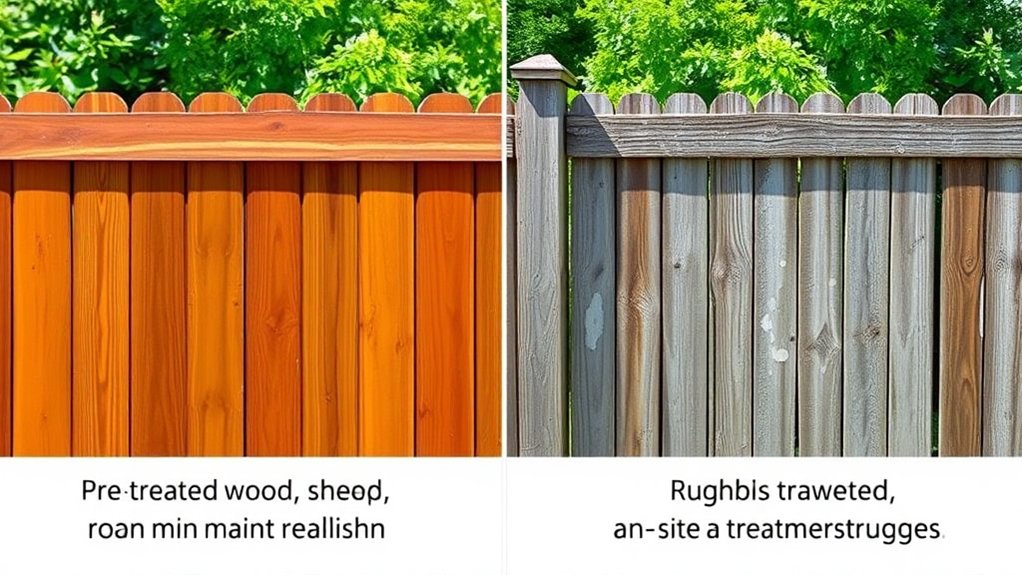
Pre-treated and on-site treated fences both create durable barriers, but they differ significantly in maintenance.
Pre-treated fences typically require less upkeep, lasting 10–20 years before needing more preservatives. In contrast, on-site treated fences often need reapplication every 1–2 years, depending on the product used. The quality of the treatment is crucial; high-quality pre-treated wood needs fewer touch-ups, while on-site treated wood requires regular care to maintain its lifespan.
Both fence types should be inspected and cleaned annually to avoid dirt and mildew buildup.
For optimal results, always reapply finishes under appropriate weather conditions and follow manufacturer instructions. Understanding these maintenance needs will help you choose the right fence for your situation.
Environmental Considerations and Impact

When assessing environmental impact, conduct a chemical impact assessment for both pre-treated and on-site treatments.
It’s crucial to understand the risks of harmful substances leaching into the environment.
Consider using sustainable materials that reduce ecological harm.
Choosing eco-friendly options can significantly lessen the negative effects of traditional preservatives.
Chemical Impact Assessment
When assessing the environmental impact of fencing materials, it’s crucial to consider chemical risks. Both pre-treated wood and on-site treatments can leach harmful chemicals, which can lead to soil toxicity and harm local ecosystems.
| Treatment Type | Chemical Risks | Soil Impact |
|---|---|---|
| Pre-treated Wood | Heavy metals (CCA) | Long-term toxicity |
| On-site Treatments | Oil-based preservatives | Localized toxicity |
| Maintenance Risks | Over-application | Nutrient disruption |
| Monitoring Needs | Heavy metal tracking | Buffer zone necessity |
It’s important to follow environmental regulations regarding chemical migration and to establish long-term monitoring strategies to protect soil health and groundwater safety.
Sustainable Material Alternatives
Sustainable material alternatives provide an excellent option for eco-friendly fencing.
Choosing sustainably sourced wood or bamboo helps protect the environment by promoting renewable resources and carbon capture.
Using recycled metal or composite materials cuts down on the need for new resources, conserving what we have.
These materials are also durable, meaning you’ll replace them less often, which reduces waste.
Plus, using responsibly harvested materials minimizes harm to local wildlife and ecosystems.
Professional Installation and Guidance
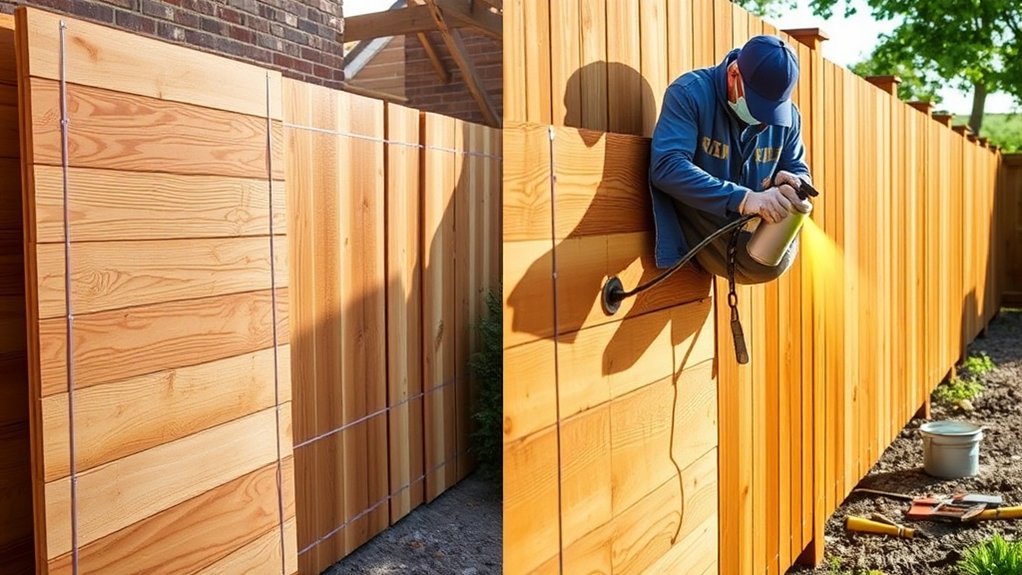
To ensure a successful fence installation, start with a consultation with a professional fencing contractor. They’ll help you choose the right design and materials based on your specific site.
Don’t forget to obtain necessary permits and inform your neighbors about the project.
During site preparation, clear any vegetation and obstacles, and ensure proper drainage and leveling of the ground.
For the posts, set them deep enough for stability, using concrete, and space them correctly.
After installation, do a quality check to confirm that the fence is safe and durable. This way, your fence will last for years to come.
Future Trends in Fence Treatment Methods

The future of fencing is evolving with innovative treatment methods that enhance durability, aesthetics, and environmental responsibility.
Here are some key trends:
- Eco-Friendly Composites: These materials are durable and sustainable, minimizing environmental impact.
- Smart Technology Integration: Fences can now have features like remote monitoring and automated gates for improved security and convenience.
- Modular Designs: These designs allow for easy repairs and customization, combining different materials for unique looks.
These advancements not only boost the longevity of fences but also enhance their visual appeal, making them a smart investment for any property.
Frequently Asked Questions
Can I Use Pre-Treated Wood for Indoor Projects?
Yes, you can use pre-treated wood for indoor projects since it resists rot. However, weigh the potential health risks and environmental impacts. Ask yourself if it’s essential for your specific project before moving forward. For example, using it for a garden bench might be fine, but avoid it for indoor furniture where you’ll be close to it.
How Often Should I Stain Pre-Treated Wood?
Staining pre-treated wood every year won’t extend its life; aim for every 2-3 years instead. Regularly check your wood for wear to know when to reapply. This keeps it looking good and prevents damage.
Are There Any Health Risks From Treated Wood?
Yes, treated wood can pose health risks. Some treatments may release harmful substances like arsenic, which can be dangerous, especially for children. To reduce exposure and health risks, it’s important to follow safety guidelines when using treated wood.
What Types of Wood Are Commonly Pre-Treated?
Commonly pre-treated woods include pressure-treated lumber, which resists decay and lasts longer outdoors. Natural options like cedar and southern yellow pine are also popular due to their natural resistance to rot and insects, making them ideal for outdoor projects.
Can I Paint Over Pre-Treated Fence Materials?
Yes, you can paint over pre-treated fence materials if you follow the right steps. Make sure the wood is completely dry before you start to avoid problems like peeling. Think of painting like giving your fence a protective outfit that helps it last longer.
Conclusion
When deciding between pre-treated fence materials and on-site treatments, consider durability, cost, and maintenance. Pre-treated materials come ready to protect your fence instantly, which is great for those who want quick results. In contrast, on-site treatments can be tailored to your specific preferences, allowing for a unique look. Ultimately, your choice will depend on your needs and the environment. By weighing these factors, you can ensure your fence not only beautifies your property but also lasts for years.

